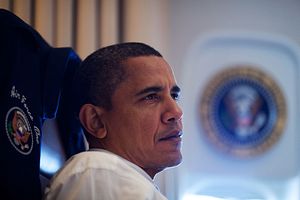On September 3, Barack Obama will embark on his 11th trip to Asia, visiting China and Laos. Though the trip is centered on his attendance at ASEAN-led and G20 meetings, given that this will be his last trip to the region before his second term ends, his engagements will touch a range of broader bilateral and regional priorities as well and reinforce the significance of the rebalance to the Asia-Pacific.
Obama will begin the China leg of his trip with a bilateral meeting with Chinese President Xi Jinping in Hangzhou on September 3, their eighth face-to-face meeting and fourth and (likely) final extended bilateral meeting (the last was Xi’s state visit to the United States last September). As is often the case at these engagements, the agenda will be a broad one where they will look to discuss progress on items in the bilateral relationship, such as the Bilateral Investment Treaty (BIT), as well as regional and global issues and challenges including the South China Sea following the ruling handed down by the arbitral tribunal in July (See: “US South China Sea Policy After the Ruling: Opportunities and Challenges”).
On September 4 and 5, Obama will then participate in his final G20 meeting. The meeting will address a wide range of issues relevant to the economic recovery and global growth more generally. Though China has done all it can to stress that it does not want the South China Sea issue or tensions between it and other countries like Japan and South Korea to get in the way of hosting a successful summit ahead of its Party Congress in 2017, it remains to be seen how things will play out on that front.
Obama will then move on to Laos on the evening of September 5. Apart from attending the ASEAN-related meetings which Vientiane is chairing this year, Obama will also become the first U.S. president to visit the tiny, landlocked, communist Southeast Asian state (See: “Laos in the ASEAN Spotlight: Opportunities and Challenges”). The Obama administration has been working over the past few months on a set of deliverables that would significantly boost U.S.-Laos relations to a new level. This includes not only additional funding for removing unexploded ordnance (UXO) dating back to the Vietnam War, but also the environment, health, nutrition, and education. These issues will feature in his various engagements, including a state luncheon with the Lao president, a summit for the Young Southeast Asian leaders Initiative (YSEALI) – a signature administration initiative – and a speech on U.S.-Lao relations and the rebalance.
Obama will also attend the U.S.-ASEAN Summit and the East Asia Summit. At the U.S.-ASEAN summit, Obama will look to build on the momentum from the conclusion of the U.S.-ASEAN strategic partnership last year and the Sunnylands Summit in February to both address issues of common concern as well as announcing new investments in the U.S-ASEAN Connect initiative, the administration’s initiative to deepen U.S. economic engagement with ASEAN as a bloc (See: “Obama Unveils New ASEAN Economic Initiative at Sunnylands Summit”). At the East Asia Summit, the usual range of issues will be discussed ranging from North Korea to the South China Sea to human trafficking.
As is traditionally the case, Obama will also have a series of bilateral engagements with leaders in addition to attending these regional meetings. One notable meeting to watch will be Obama’s interaction with the new Philippine president, Rodrigo Duterte, given the worries we have seen in the U.S.-Philippine relationship just over two months since he assumed power following a landslide election victory. Among the issues discussed will be the South China Sea after the ruling, especially given the softer stance Duterte has adopted thus far relative to his predecessor Benigno Aquino III (See: “The Risks of Duterte’s China and South China Sea Policy”).
During Obama’s trip and thereafter, there will be lingering questions about the future of the U.S. commitment to the Asia-Pacific, with uncertainty still hanging over the future of specific initiatives like the Trans-Pacific Partnership (TPP) as well as the upcoming U.S. elections in November and what a Donald Trump presidency might mean.

































